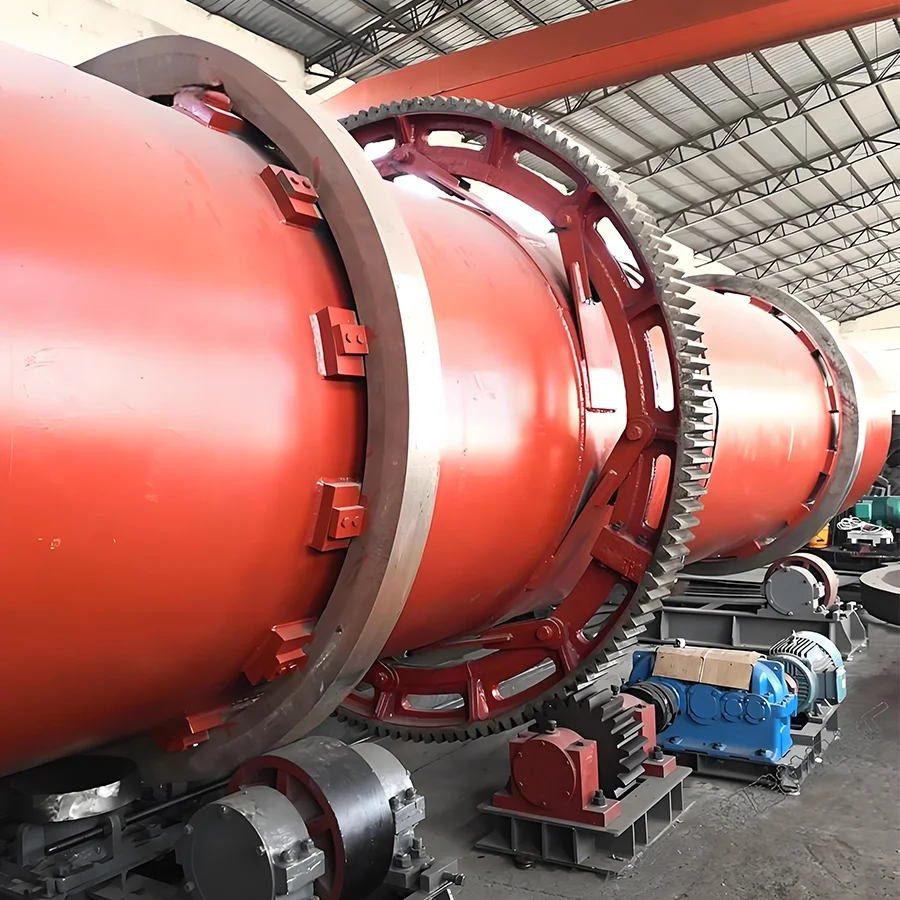- This topic is empty.
-
AuthorPosts
-
20/11/2025 at 15:26 #80557
Selecting the right rotary ring for your industrial equipment is critical to ensuring smooth operation, high efficiency, and long-term durability. In many production systems — from fertilizer manufacturing to environmental recycling — the rotary ring plays a central role in supporting rotational movement, maintaining sealing integrity, and ensuring stable mechanical performance. Choosing the wrong type can lead to premature wear, energy loss, or even costly downtime.
As an experienced developer of complete process equipment systems, Sawei Equipment Technology specializes in providing tailored engineering solutions across multiple industries. The company’s core expertise spans the agrochemical sector (including phosphate chemicals, sulfur-based chemicals, ammonium phosphate, and potassium sulfate compound fertilizers) as well as the biological fermentation and industrial recycling fields involving carbon-containing waste gas and waste oil recovery. Sawei’s professional teams ensure each piece of equipment — including critical rotary components — is optimized for performance, reliability, and environmental sustainability.
Below are key considerations to help you select the right rotary ring for your system.

1. Understand Your Equipment’s Operating Conditions
Before choosing a rotary ring, it’s essential to analyze the working environment and operational parameters of your equipment. Factors such as temperature, pressure, chemical exposure, and rotation speed will directly affect material selection and design requirements.
For example:
-
In phosphorus or sulfur chemical production, the rotary ring must resist acidic and corrosive conditions.
-
In fertilizer manufacturing systems, it should withstand abrasive materials and high temperatures during continuous operation.
-
In biological fermentation and waste gas recovery systems, resistance to moisture, microbial activity, and organic solvents is crucial.
Understanding these variables helps ensure the rotary ring material and structure match your process environment.
2. Choose the Right Material
Material selection is one of the most important factors in rotary ring performance. Common materials include:
-
Stainless steel — ideal for high corrosion resistance and mechanical strength.
-
Alloy steel — suitable for heavy-duty operations where high temperature and pressure resistance are required.
-
Ceramic or composite materials — often used in environments with strong chemical corrosion or high wear.
Sawei Equipment Technology often integrates custom material combinations to balance durability, cost, and maintenance requirements. By leveraging years of experience in chemical and environmental industries, Sawei ensures every rotary ring is engineered to deliver maximum lifespan under real industrial conditions.
3. Evaluate the Sealing and Alignment Requirements
The rotary ring often works in conjunction with seals and bearings, so proper alignment and sealing performance are essential. Poor alignment can lead to leakage, vibration, and energy inefficiency.
Key considerations include:
-
Precision machining to ensure perfect concentricity.
-
Advanced sealing designs to prevent leakage of gases, liquids, or chemicals.
-
Compatibility with rotary joints or other motion components to maintain system integrity.
Sawei’s process equipment solutions are designed with integrated sealing systems that reduce maintenance frequency and improve overall equipment stability, particularly in high-load fertilizer and chemical reactors.
4. Prioritize Energy Efficiency and Maintenance
Modern industrial systems aim to reduce energy consumption and maintenance costs. A high-quality rotary ring contributes by minimizing friction, reducing heat generation, and extending operational life.
When selecting your rotary ring, consider:
-
The surface finish and lubrication properties of the material.
-
The ease of replacement and servicing — modular designs can shorten downtime.
-
The compatibility with automatic monitoring systems, which detect early signs of wear.
Sawei Equipment Technology applies process optimization and digital monitoring to ensure that every rotary component performs efficiently and consistently within the full system design.
5. Work with an Experienced Process Equipment Partner
Ultimately, the best way to ensure you select the right rotary ring is to collaborate with an expert manufacturer who understands your process and application. With its deep experience in phosphorus and sulfur chemical processes, fertilizer plants, and eco-friendly industrial recovery systems, Sawei Equipment Technology provides complete technical support — from material selection and design to system integration and after-sales service.
The company’s interdisciplinary teams focus on innovation, reliability, and sustainability, helping clients build robust process systems that meet global environmental and efficiency standards.
Conclusion
Choosing the right rotary ring is not just a mechanical decision — it’s a strategic investment in your equipment’s long-term performance. By considering your process environment, material durability, sealing precision, and maintenance needs, you can significantly improve system stability and productivity.
With its expertise in chemical engineering and environmental process systems, Sawei Equipment Technology delivers customized rotary solutions that keep your operations running smoothly and sustainably. Whether you’re optimizing a fertilizer production line or developing an industrial recycling project, Sawei provides the experience and engineering excellence you can rely on.
http://www.swasps.com
Jiangsu Sawei Equipment Technology Co., Ltd. -
-
AuthorPosts
- You must be logged in to reply to this topic.